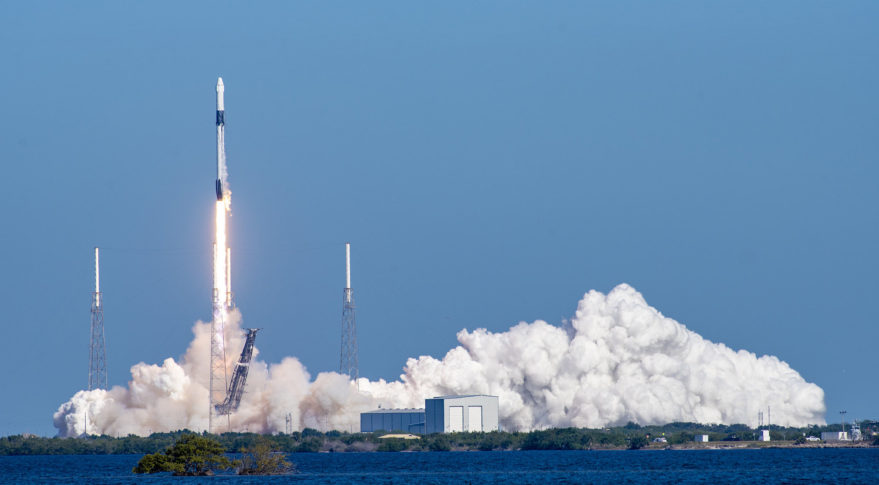
The Falcon 9 upper stage engine performed a 20.1 second burn after the six-hour coast
LOS ANGELES — The upper stage of the SpaceX Falcon 9 mission to the International Space Station Dec. 5 successfully performed a six-hour coast and a deorbit burn, a test that had been requested by the U.S. Air Force to demonstrate the vehicle can deliver national security payloads directly to geosynchronous Earth orbit.
“I got a thumbs up this morning,” SpaceX president and chief operating officer Gwynne Shotwell told reporters Dec. 6 during a media roundtable at the company’s headquarters in Hawthorne.
“They’re still looking at the data,” Shotwell said. She confirmed the upper stage engine performed a “full duration burn of 20.1 seconds after the coast.”
Shotwell said this was the third time the Falcon upper stage attempted a long coast but this was the first six-hour coast that also executed the engine burn.
This is a capability that is required for national security launches to GEO orbit. SpaceX has launched a military GPS satellite but those only require three-hour coasts.
The Air Force so far has relied on United Launch Alliance’s Atlas 5 rockets to fly payloads directly to GEO orbit. SpaceX needed to show it could do that before it has to fly classified national security missions to GEO in late 2020 under contracts the Air Force already awarded.
The upper stage also had to perform a thermal test. “It’s not the physics. It’s the thermodynamics, making sure that when you get there you can restart the engine, that your fuel doesn’t freeze,” an industry source familiar with the test told SpaceNews. “There are all kinds of complexities associated with coasting for six hours and then restarting the engine again.”
